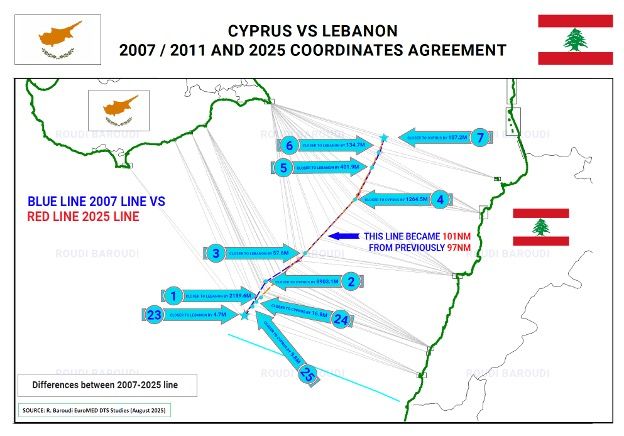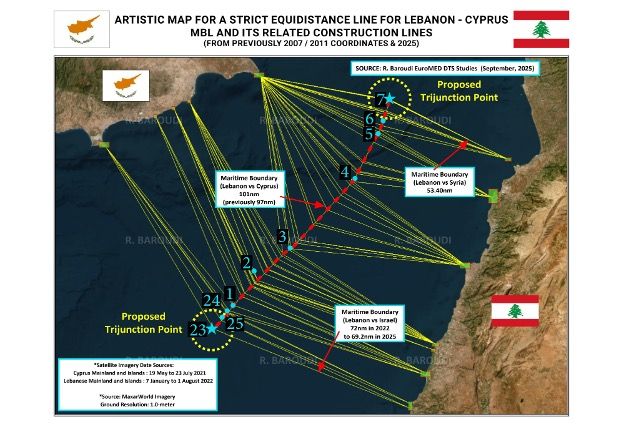
The official signing of the Maritime Boundary Agreement (MBA) between Lebanon and Cyprus is a major achievement, one that confers important advantages on both parties. This process was delayed for a very long time for no good reason, so President Joseph Aoun and the government deserve congratulations for having seized the initiative and for having seen the job through to completion. So do Cypriot President Nikos Christodoulides and his team, because they did the same thing.
The agreement, which was reached by the negotiating teams in September, provides several benefits for both countries in the short, medium, and long terms.
The new equidistance line between the two states, defined according to the rules and guidelines of the United Nations Convention on the Law of the Sea (UNCLOS), provides a fair and largely uniform boundary between the two brotherly countries’ maritime zones. Most of the new turning points used to draw the line have moved in Lebanon’s favor compared to the earlier negotiation in 2011, giving it an extra 10,200 meters on its western front while Cyprus received 2,760 meters.

Crucially, the MBA wipes away all overlapping claims caused by previous uncertainty over the precise location of the border. Accordingly, this eliminates 108 km² of Lebanese offshore blocks that were in Cypriot waters, as well as 14 km² of Cypriot blocks that were also on the wrong side of the line.
Apart from removing a key risk for would-be investors, the agreement also contributes to stability and security by providing clarity and thereby enabling easier cooperation. To make the most of this clearer playing field, the logical next step is for Lebanon and Cyprus to immediately start drafting a joint development agreement, which would allow them to have a smooth partnership in place for any hydrocarbon reserves that are found to straddle their maritime boundary.

Perhaps the most important feature of the Lebanon-Cyprus MBA is that it provides a clear and stable starting point, putting Lebanon in an ideal position to finish defining its maritime zones. The new line means that Lebanon’s existing maritime boundary arrangements with Israel, signed in 2022, should be tweaked a little, but it also makes it easier to do that—and to negotiate a similar agreement in the north with Syria when that country’s new leadership is ready to do so.



Comments